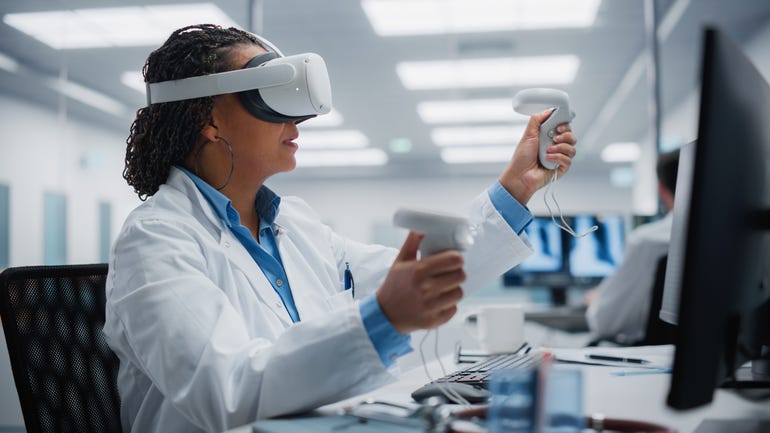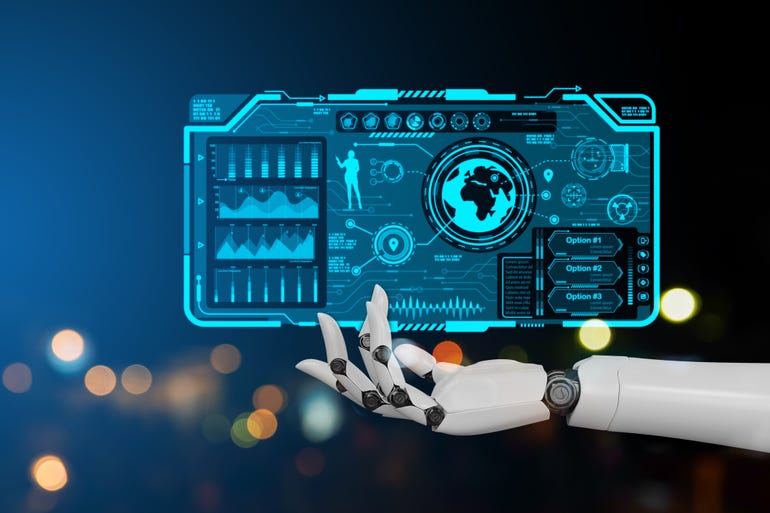A look at the impact of robotics on medtech and healthcare.
April 19, 2023

Medical robotics applications are evolving in healthcare in a variety of areas, including exoskeletons, care robots, and hospital robots. More than 250,000 people die each year in the United States from medical errors, some of which are likely preventable. Today, advances in surgical techniques and technology give surgeons more precise control over a range of procedures. For example, robotics can enhance a surgeon’s precision by using magnified 3D high-definition vision and mechanisms that strap to a surgeon’s wrists and hands. The outcome is less-invasive procedures, faster recovery time, shorter hospitalization, and long-term cost savings.
The industry is regularly developing and expanding, with no sign of stopping. In 2021, the medical robotics industry was valued at $10.6 billion, and the compound annual growth rate (CAGR) is projected to be 17.1% through 2030. Advancements in technology are pushing this steady growth as new and upgraded processes and products enter the industry every year. From robotic catheter control systems to lab assistants and beyond, these technologies are poised to continue improving patient care worldwide.
The use of robotic technology has been in play for decades. The first robots entered the medical field as assistant surgeons back in the 1980s, and the 1990s saw their introduction into radiotherapy. While these technologies have advanced, they are still in use today, along with many other applications, including exoskeletons, nursing, prosthetics, and more. In 2020, the COVID-19 pandemic created a surge in demand for sanitation and rapid healthcare with limited exposure. Robots can aid with the sanitization of public and clinical areas via ultraviolet light, thus reducing disease transmission. Limits put on travel led to a greater need for remote care by diagnosing and monitoring patients digitally without compromising quality. This type of situation calls for a combination of robotic assistance with human input, creating a team that can be as fast and efficient as possible while providing the care, support, and human touch patients need.
Robotics in the medical device world

The applications and benefits of robotics in the medical device world are extensive and ever-growing. Here are some emerging uses of robotics.
Robot-assisted surgery and radiotherapy. The benefits of robotics in this field are life-changing. Surgical robots can assist surgeons by holding tools steady while they are used with absolute precision via various attachments and disposable accessories. During radiotherapy, they can reposition a patient without the need for anyone to enter the room, reducing overall procedure time.
Laboratory. As is the case with automating any process, utilizing robots in laboratory settings reduces human error, speeds up processes, and removes repetitive tasks from workers’ queues so they can focus on other priorities. The result is increased employee satisfaction and reduced overall costs. Additionally, lab robots can perform tasks that could be harmful to humans, including those involving hazardous chemicals.
Prosthetics. Robotic appendages have advanced throughout the years from basic functions like grabbing and walking to more complex abilities such as precise finger movement and squatting or jumping. Not only do artificial limbs provide quality-of-life improvements for those who use them, but they can also help patients restore motor function. Development is even underway for robotics to be mind-controlled.
Rehabilitation and exoskeletons. Whether recovering from surgery or dealing with a disability, exoskeletons can provide critical rehabilitation to patients. This type of robot can sense electric pulses in a person’s body, allowing for movement that rebuilds muscles. They have been shown to both save time for physical therapists, enabling them to assist more people and improve the emotional well-being of patients, contributing to a speedier recovery.
Social support. Also known as care robots, social robots specialize in meeting the emotional needs of patients, especially those who are elderly or isolated. While providing companionship by having conversations and playing games, these robots simultaneously monitor for signs of distress and can respond to calls for help. They assist patients with tasks such as getting out of bed, taking their temperature, and reminding them to take their medications. This area of medical devices is expected to grow further in places like Japan, where there is an influx of elderly citizens while the number of caregivers is dropping.
Hospital robots. As with those used in laboratories, nursing robots can take on mundane or repetitive tasks, freeing up doctors and nursing staff to take on more human-centric activities. These robots can help with routine tasks like taking blood, disinfecting rooms, taking vital signs, lifting and transferring patients, and delivering items such as medication and lab specimens. This assistance boosts staff morale and reduces turnover.
Artificial intelligence (AI) training and coaching. While not new, AI trainers and coaches are constantly evolving, allowing users to train and recuperate at home. With a virtual reality setup, people can be in their living rooms while running a trail through distant lands. The technology doesn’t stop there. AI algorithms are being developed for robotic software to help a doctor diagnose a patient earlier and more accurately and can develop a treatment plan designed specifically to meet the patient’s exact needs.
Microbots. Still, in development, microbots may one day be able to help speed up recovery time by operating at a cellular level when performing surgeries, allowing for the most precise cuts possible. The potential for these minuscule robots is expansive.
Overcoming challenges
Some challenges arise with the increased use of robotic medical devices and advancing technology. Among them is the upfront expense. Robots, their accessories, and their software can be costly endeavors that escalate the more advanced the equipment becomes. Thorough research and steady, calculated integration can mitigate this. Not only will the investment improve and save countless lives, but the amount of money also saved due to issues resulting from human error and wasted time performing repetitive or redundant tasks will soon pay for the upgrades. A good place to start is with human-assisted robots, and once confidence is built, facilities can proceed with further implementation.
While there is much interest in AI and robotics in general, there is also distrust, which creates challenges for both patients and medical staff. Some are concerned by the long-term potential of advancing AI, are wary of the unknown, or are concerned about mechanical malfunctions. Others fear being replaced by robots. Nothing could be further from the truth. AI reduces time spent researching, diagnosing, and performing tasks to a fraction of the time a human can complete them. People are essential for monitoring software and coding for errors, thereby reducing the likelihood of problems. Additionally, humans are required to repair any malfunctions located.
Additional benefits

Patient safety is one of the most important benefits of robotic medical devices. Surgical robots can automate part or all of a given process and can assist with human limitations, including surgeons working on extensive operations for numerous hours, leading to fatigue. Precision in surgery not only helps the surgeon perform faster but also gets the patient into recovery sooner and with smaller wounds. Robotics also increase the likelihood that surgeons can extend their careers. As the ability to perform delicate tasks lessens with age and medical conditions, human-assisted robots can take on the elements requiring precision, while experienced surgeons make quick decisions based on their extensive knowledge.
Long-term cost savings benefit individual medical facilities and the industry as a whole. These savings can then trickle down to patients, insurance companies, and the pharmaceutical industry, among others. Costs from staff overtime, extended hospital stays, physical therapy, home care, travel, and more will decrease, offsetting the cost of robotics.
Many areas, from rural locations to other countries, suffer from a shortage of medical staff. Additionally, specialists are in high demand for various uncommon health diagnoses. With the use of robotics, a specialized surgeon can be in one country and perform an emergency operation across the world via remote navigation. Loss of life due to a doctor’s inability to get to a patient in time can be drastically reduced.
The healthcare industry has evolved dramatically and will continue to do so, both in slower steps as with long-term drug evaluations, and in quick leaps, like the 2020 pandemic, which pushed people’s expectations of healthcare to new limits. Machine learning (ML) is a type of AI that helps software applications increase their accuracy in predicting outcomes by using historical data—much more information than a human could ever hope to learn or remember. Doctors can utilize these algorithms to determine a patient’s chance of survival with a much higher degree of accuracy. With the right infrastructure, flexibility in healthcare will create new opportunities for better care for both patients and medical professionals. Robotics powered by technologies such as virtual reality, ML, and AI are the future of the medical device world and will save countless lives.
About the Author(s)
You May Also Like


